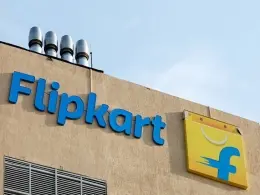Food delivery aggregator Zomato reported a four-fold increase in its net loss from Rs 63.2 crore to Rs 346.6 crore year-on-year, mainly owing to an industry-wide slowdown in food delivery business.
The company’s revenue grew 75% to Rs 1,948 crore versus Rs 1,112 crore a year ago.
“We have seen an industry-wide slowdown in the food delivery business since last October (post Diwali). The trend has been seen across the country but more so in the top 8 cities,” Zomato’s management said in a statement.
As a result, the gross order value (GOV) of the aggregator showed a marginal growth of 0.7% on a sequential basis but has grown 21.5% year-on-year, to Rs 6,680 crore.
Zomato’s chief financial officer Akshant Goyal is, however, optimistic about the food delivery business going ahead. “It remains a challenging environment but we are seeing green shoots of demand coming back in the recent weeks, which makes us believe the worst may be behind us.”
“We believe the long-term opportunity remains large and exciting. We think the current slowdown is due to factors like a macro slowdown for the mid-market segment, boom in dining out for the premium end and a boom in travel at the premium end.”
According to calculations by Mint, the company’s Ebitda (earnings before interest, taxes, depreciation and amortization) loss has narrowed to Rs 366.2 crore against Rs 488.8 crore during the same quarter last year.
"Zomato's business seems to get a hit due a slowdown in food delivery business post the Diwali festival in the third quarter. The food delivery business faced headwinds, in an otherwise strong third quarter, with adjusted revenue showing a sequential decline due to deterioration in key operating metrics such as average transacting customers and number of delivery partners. We feel that the Blinkit business is putting further pressure on the profitability of the company.
It looks that the company is still far away to achieve profitability and investors would be better to find other avenues for investing. With macro environment looking increasingly difficult as high inflation would impact discretionary spending, the near-term future for food delivery business looks cloudy," said Manish Chowdhury, head of research, Stoxbox.
To be sure, Zomato has relaunched its loyalty programme “Zomato Gold” in January and revenue from subscription is likely to give its revenue a fillip from the March quarter.
The company is also in the process of rebranding its ten-minute food delivery service Zomato Instant, to provide home-styled meals at affordable prices.
Expenses remained higher mainly due higher advertising spends, rise in delivery and related charges and strikingly higher depreciation and amortization rate.
The company’s adjusted Ebitda loss, which excludes the recently-integrated Blinkit acquisition came in at Rs 265 crore against Rs 272 crore in Q3.
Zomato added 23 million customers in CY22 against 23.6 million in CY21. These are customers who placed at least 1 order on Zomato in the year.
On the reintroduction of Zomato Gold and its impact on the company’s timeline to profitability, management believes the short-term impact will be offset by improvements in other revenue and fixed, variable cost drivers. "In the long-term, we believe we will be able to make Zomato Gold itself profitable.”
“We still feel confident about reaching adjusted Ebitda (ex-quick commerce) break-even by Q2FY24, as per our earlier estimate,” Goyal said.
Among Zomato’s other segments, Hyperpure’s revenue grew 1.7x to Rs 421 crore in Q3FY23.
Shares of Zomato ended Thursday’s session at highest levels seen in a month, at Rs 54.40 apiece, up 0.28%, against Sensex’s rise of 0.23%.







